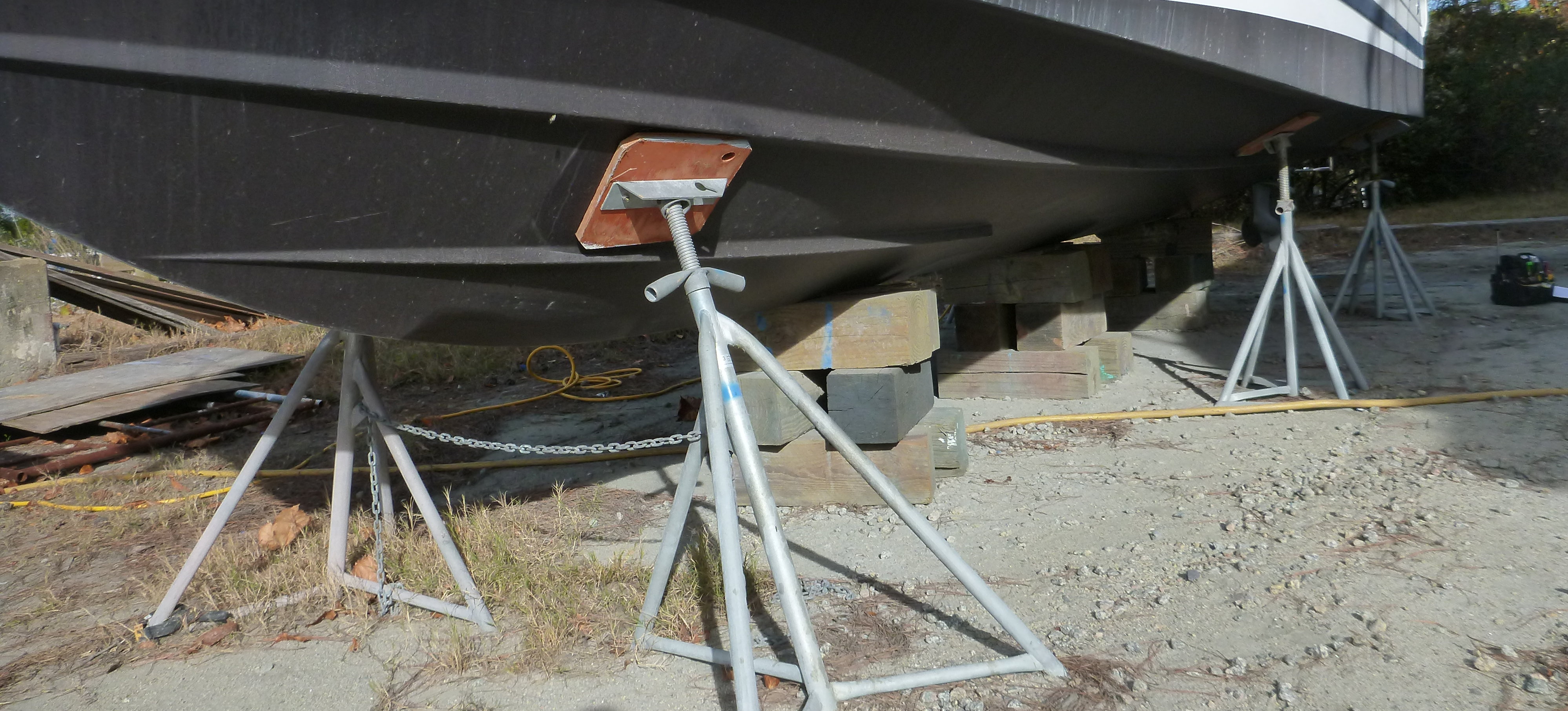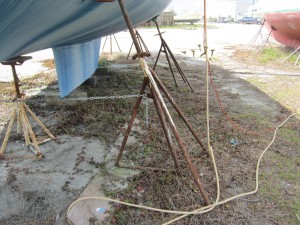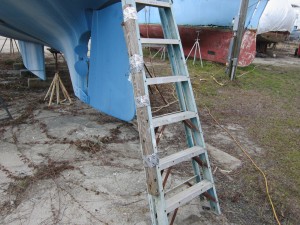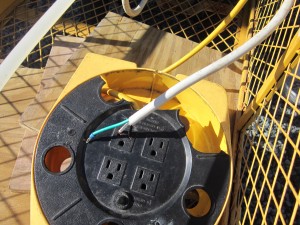Ahh it is that time of year, time to get out the scrapers and paint brushes, fire up the sanders and buffers and get to work on preparing your boat for another season in the sun. This is also is the time of year most boat yard accidents happen. Nothing can put the brakes on your boating maintenance like an injury while working on your boat. Most boatyards are filled with hidden hazards some more obvious than others, using caution and care as you begin your work will help keep you safe and get you off to a good start for the season. As you begin the ritual of spring maintenance it pays to take a few simple safety precautions to help ensure you get your work done without injury.
If your boat is blocked or set up on land make sure it is properly set up. Do not always count on the yard personnel to do this right as I have seen some scary setups in my day. The keel should rest firmly on several wood blocks. Concrete blocks are not safe for any boat over a few hundred pounds. The stands should be metal boat stands with screw type jack pads. These stands should be in good condition firmly set on solid ground and chained securely to the opposing stand on the other side of the boat.
The most common and sometimes most serious boat yard accidents involve falls. When your boat is out of the water ladders and scaffolding are often a necessity. Ladders up to the boat should be good quality, store bought ladders, securely set on the ground and tied to the boat at the rail. Never use homemade wood ladders or ladders that have been damaged. The ladder should be placed at an angle that allows you to easily climb up and down. Place the ladder so that there is something to grab onto when you get to the top and make sure it is clear of anything that might trip you while climbing onto the boat. Placing the ladder at a lifeline gate works best, use a ladder tall enough to extend a bit over the boats rail. Avoid using step ladders as these can be tippy and require all four legs to be firmly on the ground to be stable. If you must use a step ladder place it facing the boat and not side to, this will help avoid tipping. As with all ladders a step ladder should be secured to the boat at the top. Use a bucket on a rope to raise and lower tools and supplies rather than trying to carry these while on the ladder. Transferring supplies like this will leave both hands free for the ladder. Similar rules apply to scaffolding as well. Make sure it is firmly set up and will not tip over with your eight on it. If the scaffolding has wheels make sure they are firmly locked or chocked. Most work on the side of the boat requires pushing a sander or buffer up against the boat, this side force could cause the scaffolding to tip or slide way from the boat at a time you do not have a good handhold. Never use planks on oil drums or other jury rigged set ups for scaffolding. If need be scaffolding can be rented from most industrial rental stores.
If your boat is plugged into shore power while on the hill make sure there is a ground wire run from the underwater metal to a suitable ground on shore like a water pipe. If there is a short on the boat this will provide a safe path to ground. If the boat is not properly grounded you could become a path to ground when touching any bonded metal on the boat. This can be made worse if the ground around the boat is wet, which it often is. I have been bitten more than once like this when working on boats. A #8 wire connected to the propeller shaft with a clamp and then to a suitable ground like a metal water pipe will work well for this. If you are using extension cords make sure they are in good condition and that the ground pins are intact. Only plug extension cords into a GFIC protected outlet. If need be you can get an inline GFIC device to plug into an unprotected outlet, these are available at most hardware stores. Make sure your extension cords are in good condition with no damage to the outer cover. When running extension cords keep in mind they can become a tripping hazard. Try to keep them under the boat and out of the way of workers.
Proper personal safety gear such as eye protection, dust masks, and hearing protection are also important. Safety glasses should be worn anytime you are using power tools or working with chemicals such as paints and solvents. You should also wear eye protection when doing any scraping or chipping. Dust masks should be worn anytime you or anyone nearby is doing any sanding, grinding or creating fine dust particles. A respirator should be worn when working with aromatic paints and solvents including most glues and adhesives. This is particularly true when working inside. Protecting your hands is important too. Work gloves are great for protecting against cuts and scraped knuckles while latex gloves will protect you from chemicals. Tyvex suits will not only protect your clothing but also any exposed skin.
If working with flammable chemicals inside be sure to have plenty of ventilation. Remember boats are a bit like bowls and will hold fumes and vapors even with some ventilation so be careful of open flames or sparks. This is particularly true when cold out and heaters may be used, consider employing some of the best infrared heater systems as they are much safer for this use. Some solvents such as acetone are very flammable and the fumes can be set off by the spark of a drill or other power tool, I have made this mistake myself. Make sure fire extinguishers are nearby and easy to reach.
The annual haul out is never the best part of our boating experience, hard work and spending more money than we had planned all seem to be part of this ritual. Adding injury could add to the pain and expense and stop your work dead in its tracks. Taking the time to practice some basic safety habits will pay off in the long run. I know, for me, it is always the times I get to rushing and do not do what I know is right that I end up getting hurt. Take your time while working to use caution and proper safety gear to protect yourself from accidents.
Capt. Wayne



